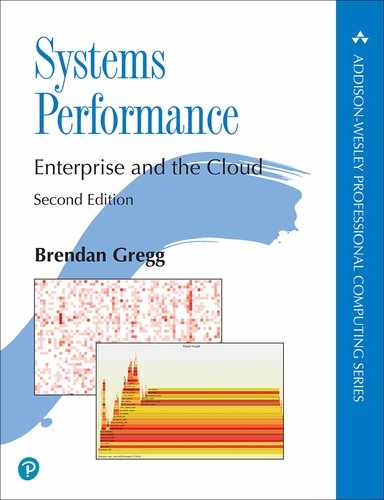Book Description
Systems Performance, Second Edition, covers concepts, strategy, tools, and tuning for operating systems and applications, using Linux-based operating systems as the primary example. A deep understanding of these tools and techniques is critical for developers today. Implementing the strategies described in this thoroughly revised and updated edition can lead to a better end-user experience and lower costs, especially for cloud computing environments that charge by the OS instance.
Systems performance expert and best-selling author Brendan Gregg summarizes relevant operating system, hardware, and application theory to quickly get professionals up to speed even if theyve never analyzed performance before. Gregg then provides in-depth explanations of the latest tools and techniques, including extended BPF, and shows how to get the most out of cloud, web, and large-scale enterprise systems. Key topics covered include
Hardware, kernel, and application internals, and how they perform
Methodologies for rapid performance analysis of complex systems
Optimizing CPU, memory, file system, disk, and networking usage
Sophisticated profiling and tracing with perf, Ftrace, and BPF (BCC and bpftrace)
Performance challenges associated with cloud computing hypervisors
Benchmarking more effectively
Featuring up-to-date coverage of Linux operating systems and environments, Systems Performance, Second Edition, also addresses issues that apply to any computer system. The book will be a go-to reference for many years to come and, like the first edition, required reading at leading tech companies.
Register your book for convenient access to downloads, updates, and/or corrections as they become available. See inside book for details.
Table of Contents
- Cover Page
- About This eBook
- Half Title Page
- Title Page
- Copyright Page
- Dedication Page
- Contents at a Glance
- Contents
- Preface
- Acknowledgments
- About the Author
- Chapter 1. Introduction
- Chapter 2. Methodologies
- Chapter 3. Operating Systems
- Chapter 4. Observability Tools
- Chapter 5. Applications
- Chapter 6. CPUs
- Chapter 7. Memory
- Chapter 8. File Systems
- Chapter 9. Disks
- Chapter 10. Network
- Chapter 11. Cloud Computing
- Chapter 12. Benchmarking
- Chapter 13. perf
- Chapter 14. Ftrace
- 14.1 Capabilities Overview
- 14.2 tracefs (/sys)
- 14.3 Ftrace Function Profiler
- 14.4 Ftrace Function Tracing
- 14.5 Tracepoints
- 14.6 kprobes
- 14.7 uprobes
- 14.8 Ftrace function_graph
- 14.9 Ftrace hwlat
- 14.10 Ftrace Hist Triggers
- 14.11 trace-cmd
- 14.12 perf ftrace
- 14.13 perf-tools
- 14.14 Ftrace Documentation
- 14.15 References
- Chapter 15. BPF
- Chapter 16. Case Study
- Appendix A: USE Method: Linux
- Appendix B: sar Summary
- Appendix C: bpftrace One-Liners
- Appendix D: Solutions to Selected Exercises
- Appendix E: Systems Performance Who’s Who
- Glossary
- Index
- Code Snippets
